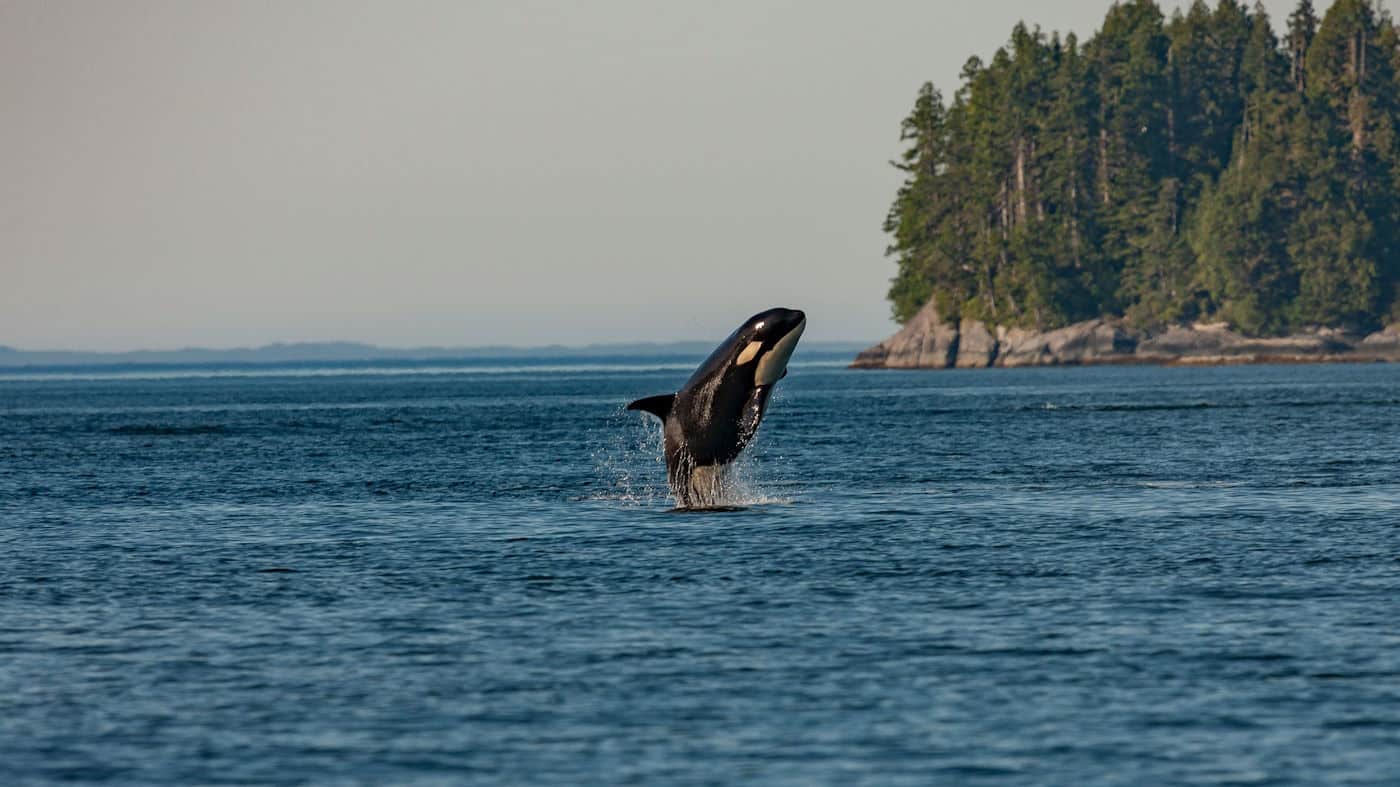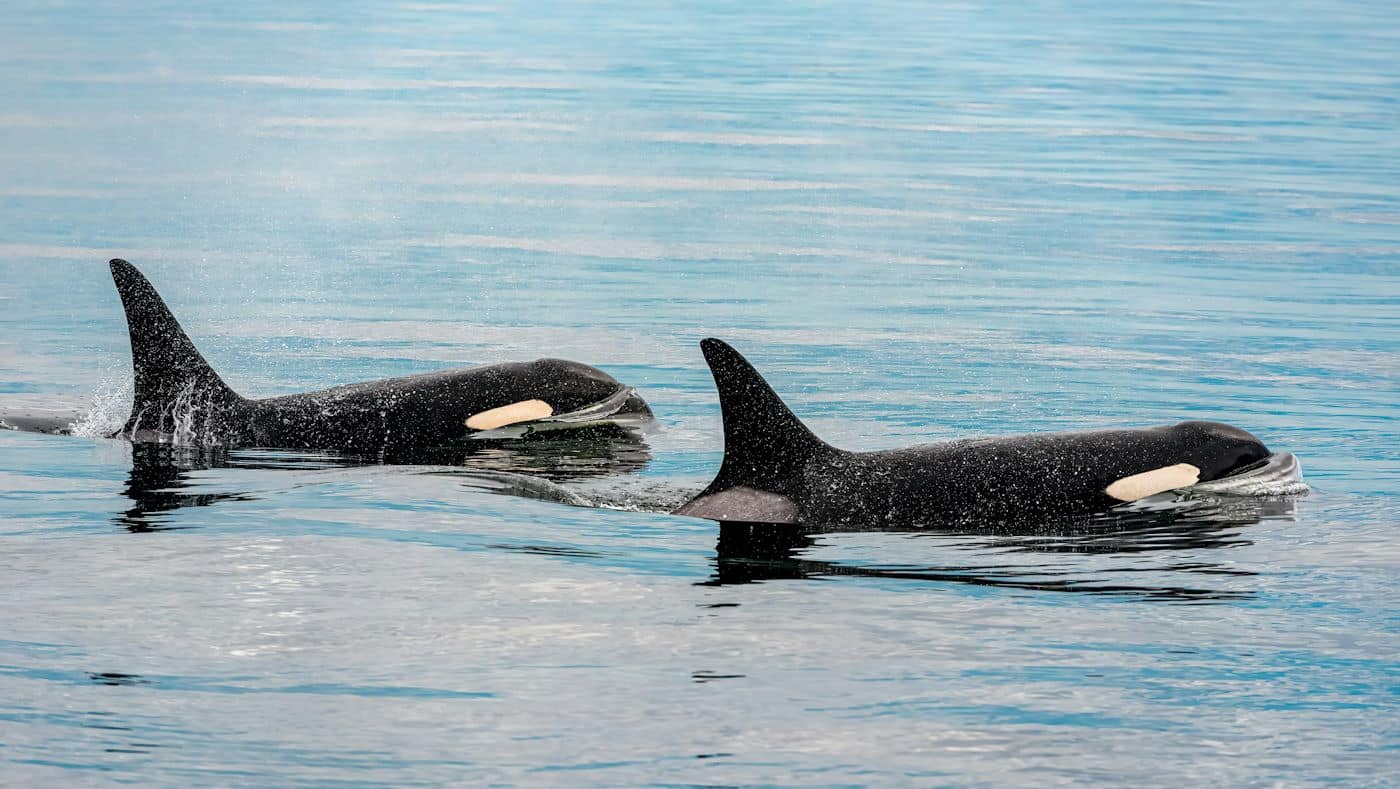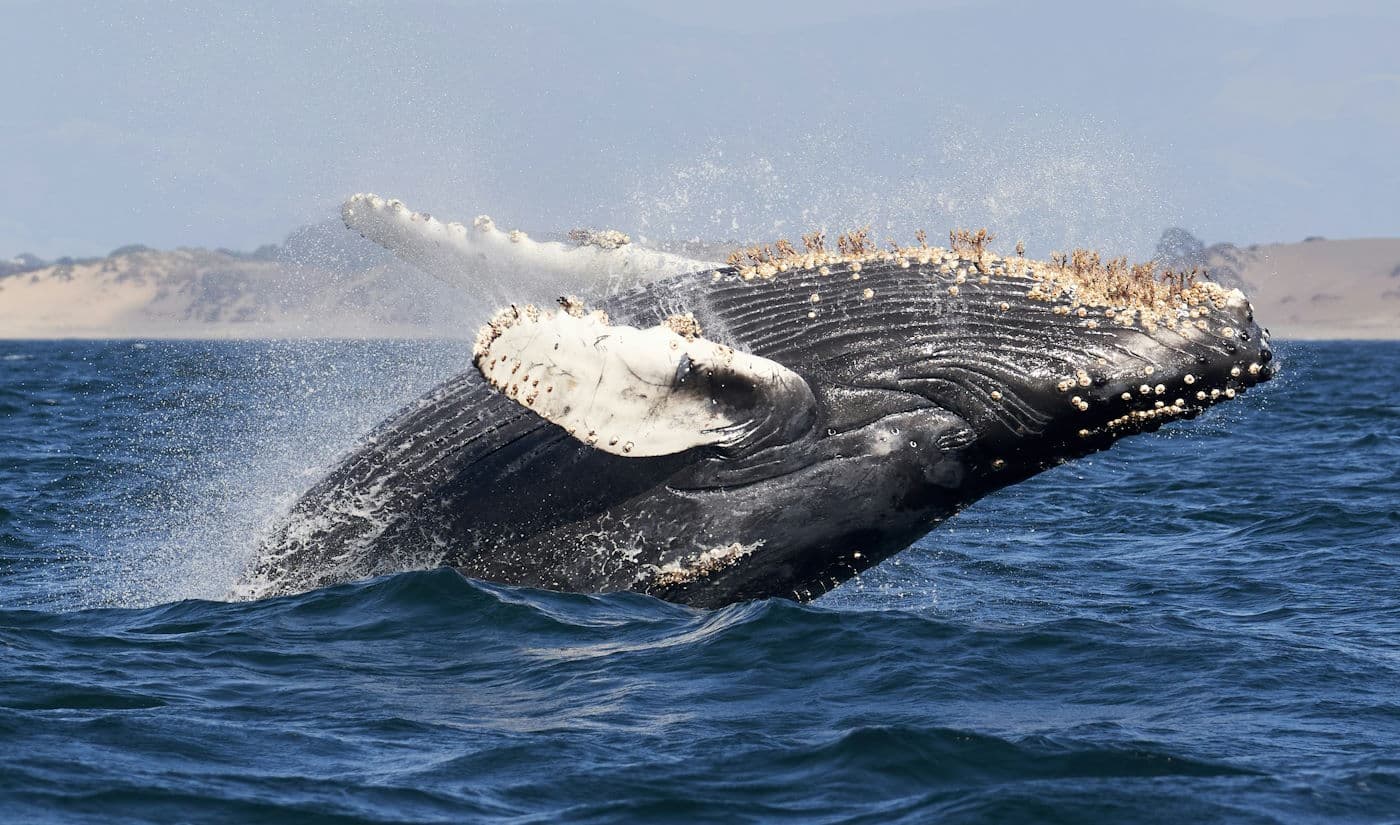Types of Whales to Watch For When Yachting in the Pacific Northwest

Boating near Vancouver Island and across the Pacific Northwest, you’re bound to discover the majestic beauty of marine wildlife, including birds, fish and seals. But if you’re lucky enough, you’ll encounter the ocean’s largest mammals – whales.
Whales are found all over the world, including right in our backyard in BC. With a boat, you have the unique opportunity of seeing these awe-inspiring animals up close and personal. But if you do, make sure you know the rules and regulations for boating with whales.
In this article, we’re going to examine the different types of whales and highlight the most commonly found ones around Vancouver Island and the Pacific Northwest:
Porpoises vs. Dolphins vs. Whales
The difference between porpoises, dolphins and whales is of common confusion.
It’s tough to distinguish between a dolphin and a porpoise, but the main differences are physical. Porpoises are typically smaller than dolphins and have spade-shaped teeth. Dolphins are generally larger with conical teeth, plus with a hooked or curved dorsal fin. A dolphin will normally have a longer nose, bigger mouth, and leaner body.
Dolphins and porpoises are actually a type of toothed whale, although they appear much different than what you would expect of a whale. Whales are generally much larger than the other species, but the more interesting difference is behavioural. Dolphins, porpoises, and other toothed whales are known for their intelligence, sociability, playfulness, and for travelling in large groups (pods). On the other hand, some species of whales are lone wolfs who live relatively solitary lives minus maybe a small group. Then when it’s time, they’ll migrate thousands of kilometres.
Orcas

With these differences in mind, it’s easier to understand why Orcas – also known as ‘Killer Whales’, are actually classified as dolphins and not whales. Orcas are known for traveling in pods and for being highly social and intelligent hunters.
Orcas got their nickname from sailors long ago who witnessed them prey on much larger animals. While they are top predators, orcas will eat just about everything from birds to fish and seals.
The largest member of the dolphin family, orcas typically range from 5 to 10m, weighing up to 5,500 kg, with the females being slightly smaller. One of their defining features is the tall black dorsal fin, which can reach nearly 2m tall.
BC is one of the best places in the whole world to spot these majestic mammals. Orcas off the coast of BC are classified into three separate populations: Northern Residents, Southern Residents, and ‘Biggs’ (transient killer whales). The Southern Residents of BC are endangered, with under 100 whales remaining in the population due to contaminants, a decline in Chinook salmon, and physical/acoustic disturbances. Conservation and recovery efforts are underway, so the best thing you can do as a boater is stay 400m away and reduce your speed to under 7 knots.
The Two Types of Whale
All whales fall under two categories – baleen and toothed.
Baleen Whales

Baleen Whales are generally massive creatures. The largest recorded animal on Earth right now is a baleen whale known as the Blue Whale. But it’s not just size that sets baleen whales apart, it’s the way they feed. Baleen whales have strong and flexible baleen plates in their mouth instead of teeth, which are similar to bristles and used to sieve pray right out of the water. Despite their impressive size, these baleen whales feed on very small animals, like small fish, zooplankton, and krill.
Most Baleen whales are migratory animals. Some travel farther than others, but the principle remains the same – cold water is best for finding food while warm water is best for raising calves (babies).
These whales are typically known for travelling solo, but you can find them in small groups. Baleen whales are further grouped into four different families: ‘Right’, ‘Gray’, ‘Pygmy Right’, and ‘Rorqual’. Here are some of the types of baleen whales found in this part of the world:
- North Pacific Right Whale. This super rare whale species has been endangered since 1970, with less than 500 total remaining. These whales are black with a stocky build, known for having no dorsal fin and white underbelly patches. Females are larger than males, at up to 100 tons and 65 feet long.
- Gray Whale. Gray Whales used to live all over the ocean, and now reside in just the North Pacific Ocean. They’re known for being curious towards boats, which exasperates the human threat. These mammals make one of the largest annual migrations of them all – up to 10,000 miles (round trip). Gray Whales grow to be just under 50 feet and weigh roughly 90,000 lbs.
- Blue Whale. Blue Whales are found nearly everywhere, but the northeastern Pacific population has been endangered since 2012, with less than 250 remaining. These whales have a long, slender body with blue-ish gray colour. Blue whales are the largest mammal on the planet, growing up to 110 feet and weighing up to 330,000 lbs.
- Humpback Whale. Humpback Whales are also found all over the world, but they’re endangered in the Western North Pacific. They have one of the longest migrations on the planet and are characterized by long pectoral fins and a distinctive hump on its back.
- Fin Whale. Fin Whales are the second-largest species, found all over the oceans. These whales are fast swimmers, with streamlined bodies and a V-shaped head. They’re also social, travelling small groups. These whales weigh in at 40-80 tons and range up to 85 feet.
Toothed Whales

Toothed Whales are the apex predators of the ocean. They’re equipped with a special sense called ‘echolocation’, with aids them in hunting and navigating underwater. Like their name suggests, they also have teeth for hunting, vs. bristle-like plates.
There are 10 different families of toothed whales, which include dolphins and porpoises, along with over 75 different species. Like dolphins and porpoises, toothed whales are known for having large brains. They are extremely intelligent creatures that have demonstrated the ability to teach each other. In addition, they tend to travel in pods.
Here are some of the toothed whales found around the Pacific Northwest:
- Sperm Whale. The largest toothed whale species, sperm whales are found all over the oceans. Females prefer the warmer water but are known to travel as high as the Pacific Northwest. Dark gray and wrinkled with a small dorsal fin, these whales reach up to 50 feet.
- Dall’s Porpoise. The Dall’s Porpoise is found from California to Alaska, named after an American naturalist. Maxing out at around 450lbs, these whales are super fast swimmers and often mistaken for baby Orcas because of their black and white appearance.
- Harbour Porpoise. Smaller than most fully grown humans, this is the smallest whale you’ll find off the coast of BC. They are multi-coloured gray, white, and brown, with a small dorsal fin.
- Orca. As mentioned about, Orcas are intelligent and sociable apex predators that live primarily in the Pacific Ocean. The Southern Residents are extremely endangered, so it’s best to give them plenty of space.
- Pacific White-Sided Dolphin. These dolphins are found from Alaska to California travelling in groups of 10 to 100. As is typical with dolphins, this species is highly intelligent, playful, and sociable. If you’re lucky enough to spot some, they won’t be afraid to come up and say ‘hi’, swim around your boat, and perform airborne acrobatics.
If you’re ready to hit the water and experience the natural beauty of BC and the surrounding coastal areas, check out our collection of new and used boats at Van Isle Marina. Contact us today, or visit us at 2320 Harbour Road in Sidney, BC.
